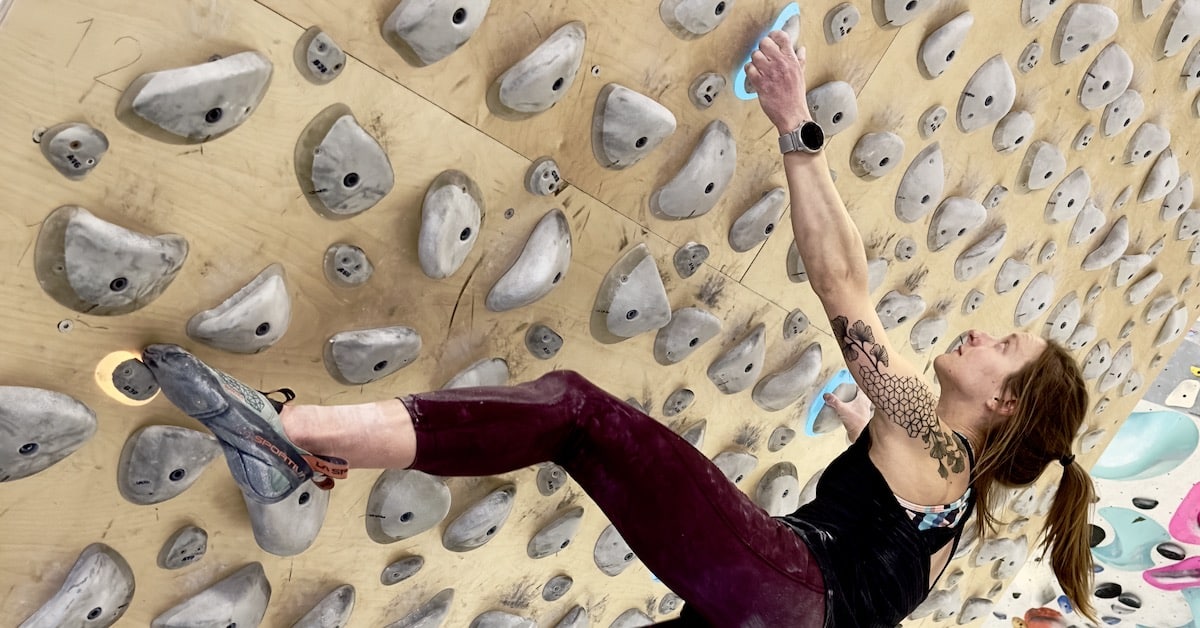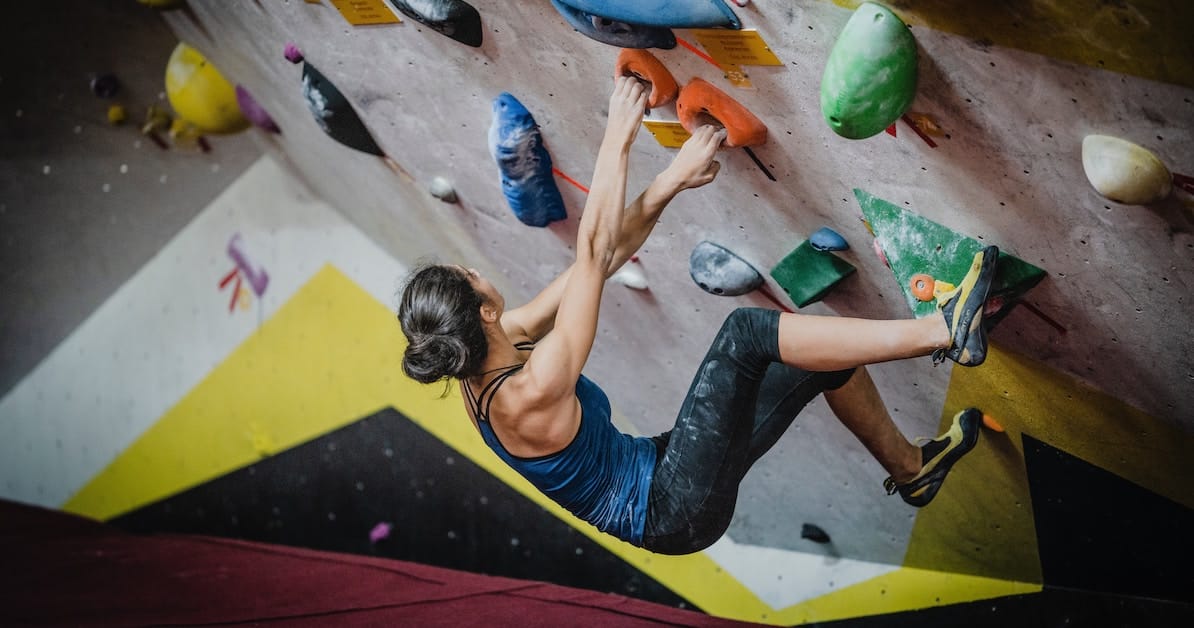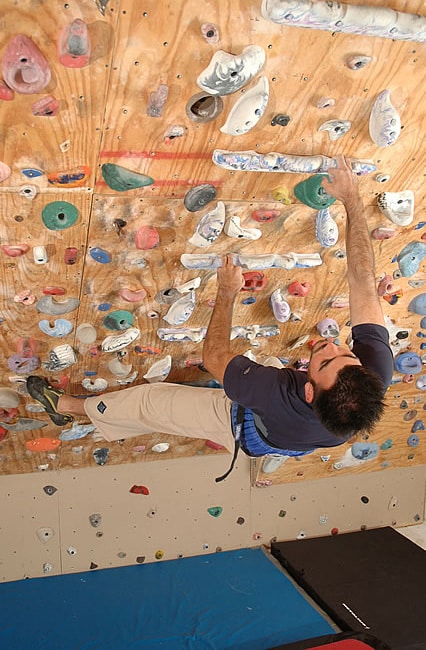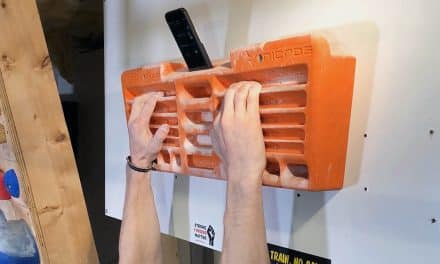Get the lowdown on every type of interactive climbing board you’ll find in gyms and garages across the world, and how they can each help you become a better climber.
Visiting a climbing gym used to mean giving yourself over to the mercy of the routesetters that be. For better or for worse, you walked into a different experience every time. Style, angle, hold selection, hold placement, body positioning, and more can all vary drastically from setter to setter and gym to gym. This isn’t a bad thing.
Challenging ourselves on a wide variety of terrain is an essential piece of the training puzzle. And besides, it’s just plain fun to mix things up. No one enjoys or benefits from climbing the exact same routes over and over again. New sets keep us engaged, eager, and enthusiastic about climbing from day to day.
But there’s also something to be said for having a hand in your climbing and training. Sometimes a gym’s custom sets might not suit your goals—for the day, the season, or ever. And depending on the setting team’s background and target demographic, there’s a chance that you’ll find yourself feeling more shut down than healthily challenged. I’m thinking specifically of those that don’t fit the typical “gym bro” mold here: women, youth, and BIPOC climbers, for example. And one of the only things worse than a lack of variety in your training is, well, not climbing at all.
Nowadays, climbing in a gym doesn’t always have to be a case of “you get what you get and you don’t get upset”. Interactive climbing boards have entered the picture as another tool in the training toolbox. Don’t get me wrong: there’s no replacing the art of traditional routesetting. But interactive boards come with their own perks:
- Autonomy. Interactive boards help climbers exercise more control over their training. They make it easier to target specific movement patterns, grips, reaches, and energy systems based on your unique needs.
- Diversity. Climbers from all backgrounds and demographics can create their own sequences to share with the community of users. More opinions, more experiences, more options.
- Efficiency. With thousands of climbs available in one place at the literal push of a button, it’s possible to fit a productive sesh into the tightest of schedules. Just connect, swipe, climb, and repeat until your next meeting or your arms fall off—whichever comes first.
- Consistency. No more falling off the training wagon when you’re away from home base. Wherever you go, you can find the same thing from one board to the next of the same model. Traveling or living on the road? Pop into a gym with the board you’re looking for and pick up right where you left off every time.
For all these reasons and more, the climbing community is psyched on interactive boards. Let’s dive into all the different types of interactive climbing boards so you know what to expect from each one.
MoonBoard
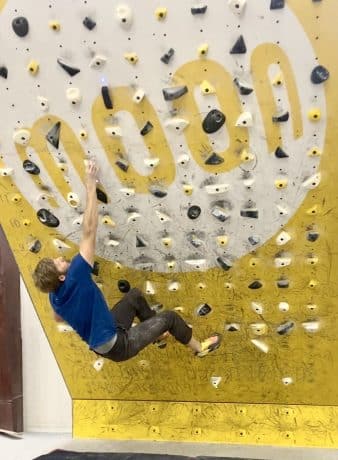
Ben Rathbun gears up for a dynamic jump on the MoonBoard.
This is the OG interactive climbing board. Designed by Ben Moon in 2005, the MoonBoard consists of an 8×10.3 foot panel set at a fixed angle of either 25° or 40° with three different hold collections and setups available to choose from. The original collection is all plastic, while the latest two releases feature a mixture of wood and plastic material. Climbers tend to describe the MoonBoard as the most applicable to outdoor climbing. Think small holds, heavy on pockets and compact pinches, featuring fingery moves to desperate catches. It’s not for the faint of heart. Don’t be afraid to ease in slowly. Nobody’s judging—we’ve all been there.
Newbies to the MoonBoard will want to start with the designated Benchmark problems first. These have seen the most action over the years, so are the most “vetted” in terms of quality. Just don’t confuse quality with ease. The MoonBoard has earned a reputation for sandbaggery…and that’s part of the charm. Leave your ego at the door, listen carefully to your tendons, and enjoy your ride on the struggle bus. It’s good for you.
Kilter Board
On the flip side, the Kilter Board is known for its approachability. Big holds, comfortable molding, soft textures, a full circumference of lighting on each hold, and an angle range from 10° to a whopping 68° make this board from Ian Powell and Jackie Hueftle at Kilter Grips a real crowd pleaser. So much so that you’ll almost never have it all to yourself at the gym. But don’t worry—that’s a good thing. You’ll need as much rest as you can get between goes.
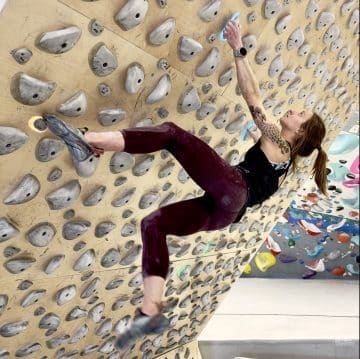
The author mid-swing on the Kilter Board.
That’s because the holds are so friendly that power can take center stage. The Kilter Board is made for pushing the limits of power and body tension rather than pure finger strength. You’ll be flying from one side of this giant 12×12 foot panel (with narrower widths available for compact spaces) before you can think twice. It’s exhausting, even if you’re having too much fun to notice in the moment.
Tension Board
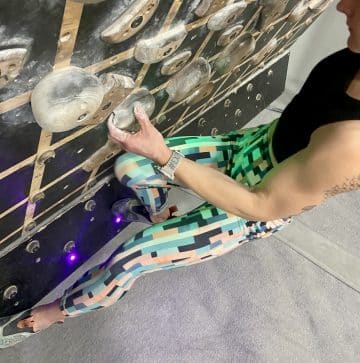
The Tension Board’s smooth, slick, dense wooden holds challenge a climber’s sense of control.
Speaking of body tension, there’s no better choice among interactive climbing boards for targeting that than the Tension Board. It’s right there in the name, after all. Slick and smooth wooden holds will test your fingers, but more so your full body strength. Get ready to light your core on fire.
There are now two versions of the Tension Board on the market. The first model features monochromatic wooden holds set in a symmetrical orientation on either a 10×8 or 12×8 panel. The second iteration adds more variety to the hold selection with both wood and plastic designs, and two more panel sizes: 12×12 and 12×8. You can also choose between a symmetrical or spray style layout for the Tension 2. But the original symmetry may be the most valuable tool Tension brings to the table. The ability to mirror a problem reveals sneaky imbalances in the body. Working to bring both sides of the body into balance can go a long way toward preventing injuries and boosting performance.
Grasshopper Board
The Grasshopper piggybacks off of that same symmetrical layout, but that’s about all these two boards have in common. The Grasshopper’s highly textured grips offer more variety in size, shape, and directionality than any other board. Slopers get prime real estate on the Grasshopper, so it’s ideal for training open hand grip strength. The whole design caters to modern gym styles. That makes sense, given that Josh Larson—USA Climbing National Team Head Coach and Level 5 routesetter—is one of the brains behind it all. Embrace your inner comp kid and get after it!
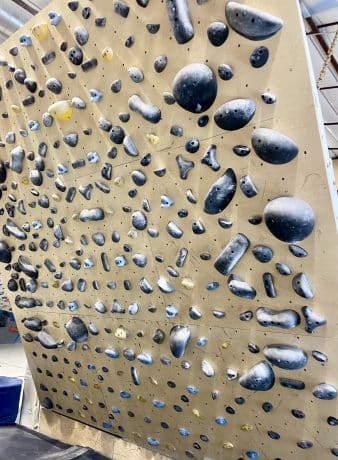
The Grasshopper Board uses large, sloping holds to mimic competition-style gym climbing.
Decoy Board
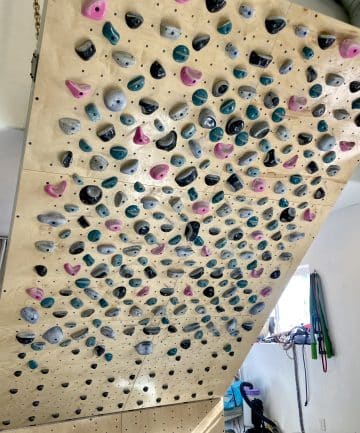
The Decoy Board in all its dual-tex glory.
The lesser known Decoy Board is here to rain on your parade. Don’t pull on unless you’re ready to put up a fight, because this board takes no prisoners. Designer Dan Yagmin opts for unusual hold shapes and sizes that catch the eye while throwing the body for a loop. Dual textures, delicate edges, and sneakily shallow pockets demand your full attention. You can’t just huck-and-pray your way out of every hard move. Success comes from a combination of power and precision.
But if you’re up for the challenge, nothing will whip you into shape like the Decoy. I mean that both physically and mentally. You’ll quickly learn to expect the unexpected—an oft-neglected climbing skill—and discover all the hidden secrets of its intricate holds. Each hold contains a multitude of possibilities depending on how you approach it. Put on your creative thinking cap for this one.
Woods Board
The newest kid on the block is the brainchild of elite boulderer Daniel Woods and Andy Raether, owner of Menagerie Climbing. The Woods Board takes more after spray walls than its peers. This mainly translates to high hold density on the wall. And each of those holds is designed to be used in as many ways as possible, i.e. footholds that actually function as reasonable handholds too.
The goal here is to offer a training tool that will never get old. It’s hard to imagine that happening with any board, but even less so with the Woods Board. The tight layout and sheer quantity of holds combined with symmetrical placement opens up unimaginable potential for unique sequences. The Woods Board is still making its way into the hands of climbers, so hang tight for public opinion.
Key Points on Interactive Climbing Boards:
- The MoonBoard does the best job of mimicking outdoor textures and movement patterns, using small holds that test finger strength.
- The Kilter Board is friendlier on the fingers, with an emphasis on power and fluid movement.
- The Tension Board uses sleek wood holds to develop body tension and balanced strength.
- The Grasshopper Board aligns best with modern gym setting styles and focuses on open hand grip strength.
- The Decoy Board will help you flex your physical and mental muscles as you decipher the numerous subtle ways to use these intricately designed holds.
- The jury’s still out on the Woods Board, but the dense hold arrangement inspired by spray walls offers the potential for a higher number of unique sequence creations than any of its peers.
Related Articles:
- How to Train Sport Climbing Endurance on a Home Wall
- How Matt Fultz Trains From Home for V16 Climbs
- Effective Treadwall Training for Endurance, Strength, and Power
Copyright © 2000–2023 Lucie Hanes & Eric J. Hörst | All Rights Reserved.

